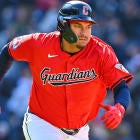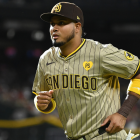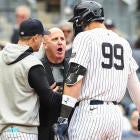
With Major League Baseball's draft now less than a month away (Sunday, July 17), CBS Sports has begun previewing the upcoming class. We've already ranked the top 30 prospects; mocked the first round; and surveyed the most polarizing players. We'll have even more preview material coming over the ensuing weeks, all the way up until the Baltimore Orioles make their third No. 1 overall selection in franchise history.
The past few months have proven to be eventful for recent top selections. To wit: Carlos Correa signed a massive free-agent contract; Dansby Swanson won a World Series and is trying to set up his own payday; Casey Mize and Royce Lewis suffered season-ending injuries; Spencer Torkelson and Adley Rutschman made their big-league debuts; and Mark Appel has positioned himself to do the same.
With that in mind, today's Prospect Watch is dedicated to recapping the last decade of No. 1 picks: how they've worked out, where they are now, and how things might've been different if the team in question had decided to take another route.
2012: Carlos Correa, SS, Houston Astros
Correa, the first and (by far) most successful of Houston's three consecutive No. 1 picks, is a member of the Minnesota Twins now. Oh well, he's still on pace to finish as one of the most productive top overall picks in league history. Already a two-time All-Star, he's accumulated roughly 36 Wins Above Replacement before the end of his age-27 season; for reference, Adrián González ranks fifth in WAR among No. 1 picks, with 43.5 for his career. There's a real chance, then, that Correa cracks the top five before he turns 30. As an added bonus, the Astros' decision to take Correa over Byron Buxton helped popularize the "portfolio approach," the same philosophy that the Orioles have deployed in the past and may again when making their pick this July.
2013: Mark Appel, RHP, Houston Astros
The Astros again saved money at the top by selecting Appel instead of Kris Bryant. (Bryant, drafted second by the Chicago Cubs, received a signing bonus worth a few hundred thousand more than Appel's.) Appel was expected to be a safe, quick-moving No. 2 or 3 starter, but injuries and underperformance plagued him. The Astros threw in the towel relatively quickly, sending him to the Philadelphia Phillies after the 2015 season as part of the Ken Giles trade. Appel later retired from the sport before reaching the majors; he's since returned, and has pitched well enough in a relief role this season to envision him making it to The Show before the end of the year.
2014: Brady Aiken, LHP, Houston Astros
Here we've reached the most controversial No. 1 pick of the decade. The Astros did not sign Aiken after a post-draft physical revealed an abnormality with his ulnar collateral ligament (also known as the Tommy John ligament). That decision had ramifications elsewhere, since it prevented the Astros from executing agreed-upon deals with other players in their class and violating MLB's rules. (The Astros had to make-right with those players, but there's no record of the league punishing them.) Aiken would spend a year at IMG Academy before being selected in the middle of the first round by the Cleveland Guardians. He never recovered, and he was released last fall after making just 43 professional appearances (none above A-ball). Aiken hasn't latched on elsewhere, and he hasn't pitched in a regular-season game since 2019. He'll celebrate his 26th birthday in August, but it's fair to wonder if his career is over. The Astros, by the way, received the No. 2 pick in the 2015 class as compensation. They used that pick to select Alex Bregman, who has since become a franchise cornerstone.
2015: Dansby Swanson, SS, Arizona Diamondbacks
For as good as Vanderbilt's baseball program is and has been, Swanson was just the second Commodore selected with the top pick. (The first was David Price in 2007.) Swanson spent six months as a member of the Diamondbacks organization before he was traded to the Atlanta Braves as part of the ill-advised Shelby Miller deal. For much of his career, he's been more of a decent roleplayer than a star-level contributor; he's doing his best as of late to change that perception: he's in the midst of a fantastic walk year, and he received downballot consideration for the 2020 Most Valuable Player Award. It's to be seen if Swanson can maintain this level of production; regardless, it's fair to conclude the D-Backs probably wish they would have held onto him -- or, more likely, that they had selected the aforementioned Alex Bregman and held onto him.
2016: Mickey Moniak, OF, Philadelphia Phillies
There wasn't a clear-cut No. 1 pick in 2016, so the Phillies went with Moniak, a well-rounded prep outfielder with few weaknesses. It hasn't worked out. Including this season, he's sporting a career 21 OPS+ in 38 big-league games. Moniak has enjoyed more success in the minors, and he's still young enough (24 years old) to think he could develop into a reserve. If there's a bright spot, it's that the Phillies can't fret about passing on a Bregman or a Bryant. The top 10 as a whole, including Moniak and No. 2 pick Nick Senzel, has yielded seven players who either haven't reached the majors or who have and who have since recorded less than 0.1 WAR. Indeed, the most productive first-rounders from that class are Will Smith (32nd pick), Cal Quantrill (eighth), Ian Anderson (third), and Dakota Hudson (34th).
2017: Royce Lewis, SS, Minnesota Twins
There are some similarities between 2016 and 2017's draft. Both featured a high-school position player going No. 1, and both have seen the middle-to-late portions of the round carry the day. (The three most productive players in the 2017 first round so far were selected with the 24th, 13th, and 20th picks.) It's not a total copy-and-paste job, however, because Lewis was deemed to have louder tools and a bigger upside than Moniak. He's also had more rough breaks. Lewis missed the entire 2021 season after tearing the ACL in his right knee, delaying his arrival until this season. Unfortunately, he just tore that ACL again, 12 games into his big-league career and 16 months after the first injury. He's expected to miss about a year, meaning the best-case scenario would see him return just before the 2023 All-Star Game.
2018: Casey Mize, RHP, Detroit Tigers
Speaking of injuries and lost years, Mize underwent Tommy John surgery in June that will sideline him for at least 12 months. He's made 39 big-league starts to date, amassing respectable marks that include a 101 ERA+ and a 2.64 strikeout-to-walk ratio. He'll be 26 years old the next time he throws a pitch, and it'll be interesting to see where his career takes him from there. As it stands, he doesn't miss bats or suppress quality-of-contact well enough to forecast him becoming more than a mid-rotation starter. Nevertheless, Mize still ranks as one of the five most productive first-rounders to date from 2018, though he ranks third among college arms thanks to the emergence of Shane McClanahan (pick No. 31) and Logan Gilbert (No. 14).
2019: Adley Rutschman, C, Baltimore Orioles
Rutschman has scuffled to begin his big-league career, but there's no reason just yet to panic. He was a slam-dunk No. 1 pick based on a profile that scouts thought could feature four plus or better tools at maturation. Unlike the preceding classes, this draft still appears to be loaded at the top: Bobby Witt Jr., Andrew Vaughn, Riley Greene, CJ Abrams, and Nick Lodolo represented five of the next six picks (JJ Bleday, the fourth pick, has disappointed). Meanwhile, the rest of the first round saw teams select the likes of Josh Jung, Alek Manoah, Corbin Carroll, George Kirby, Daniel Espino, Anthony Volpe, and Seth Johnson. We'll see where life takes them, but this class appears to have the potential to produce several All-Star-caliber players, including some repeats.
2020: Spencer Torkelson, 1B, Detroit Tigers
As with Rutschman, Torkelson's rookie year is off to a poor start. Going solely off Baseball Reference's version of WAR (a counting statistic, mind you), he's been the least productive player in the majors. There's no sense overreacting to 60-something games, but Torkelson's lack of positional value gives him a thinner margin of error than someone like Rutschman possesses. The expectation on draft night was that Torkelson would turn into a middle-of-the-order force; he'll have to in order to justify being the first right-handed first baseman ever chosen with the top pick.
2021: Henry Davis, C, Pittsburgh Pirates
The Pirates followed in the cleat marks of the Astros and the Orioles by embracing the portfolio approach last summer. Davis may have been the first name off the board, but he received just the fifth-highest signing bonus (and more than a million less than Jack Leiter, who was the No. 2 selection); Pittsburgh, in turn, redistributed the savings by taking three other players who cracked CBS Sports' pre-draft top 50. Davis has already reached Double-A, and barring an injury he should reach the majors next summer, once the Pirates have successfully manipulated his service time.






















